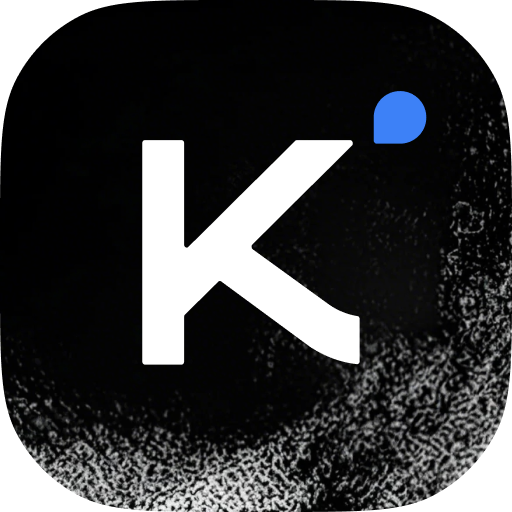What are Open Source LLMs for Software Development?
Open source LLMs for software development are specialized large language models designed to understand, generate, and reason about code across multiple programming languages. Using advanced architectures like Mixture-of-Experts (MoE) and reinforcement learning, they autonomously write code, debug errors, refactor codebases, and interact with development tools. These models support real-world software engineering workflows—from simple code completion to complex agentic coding tasks—enabling developers to accelerate development cycles, improve code quality, and solve challenging programming problems with unprecedented AI assistance.
moonshotai/Kimi-Dev-72B
Kimi-Dev-72B is a new open-source coding large language model achieving 60.4% on SWE-bench Verified, setting a state-of-the-art result among open-source models. Optimized through large-scale reinforcement learning, it autonomously patches real codebases in Docker and earns rewards only when full test suites pass. This ensures the model delivers correct, robust, and practical solutions aligned with real-world software engineering standards.
moonshotai/Kimi-Dev-72B: State-of-the-Art Code Reasoning
Kimi-Dev-72B is a new open-source coding large language model achieving 60.4% on SWE-bench Verified, setting a state-of-the-art result among open-source models. With 72 billion parameters and a 131K context window, it's optimized through large-scale reinforcement learning to autonomously patch real codebases in Docker environments. The model earns rewards only when full test suites pass, ensuring it delivers correct, robust, and practical solutions aligned with real-world software engineering standards. This rigorous training approach makes Kimi-Dev-72B exceptionally reliable for production-grade code generation and software development tasks.
Pros
- State-of-the-art 60.4% score on SWE-bench Verified among open-source models.
- Large-scale reinforcement learning ensures robust, test-passing code.
- 131K context length for handling extensive codebases.
Cons
- Higher computational requirements with 72B parameters.
- Pricing at $1.15/M output tokens may be higher for extensive use.
Why We Love It
- It sets the benchmark for open-source coding models by delivering production-ready code that passes real test suites, making it the gold standard for serious software development.
Qwen/Qwen3-Coder-480B-A35B-Instruct
Qwen3-Coder-480B-A35B-Instruct is the most agentic code model released by Alibaba to date. It is a Mixture-of-Experts (MoE) model with 480 billion total parameters and 35 billion activated parameters, balancing efficiency and performance. The model natively supports a 256K token context length and is specifically designed for agentic coding workflows, where it not only generates code but also autonomously interacts with developer tools and environments to solve complex problems.

Qwen/Qwen3-Coder-480B-A35B-Instruct: The Ultimate Agentic Coder
Qwen3-Coder-480B-A35B-Instruct is the most agentic code model released by Alibaba to date. As a Mixture-of-Experts (MoE) model with 480 billion total parameters and 35 billion activated parameters, it balances efficiency and performance masterfully. The model natively supports a 256K (approximately 262,144) token context length, which can be extended up to 1 million tokens using extrapolation methods like YaRN, enabling it to handle repository-scale codebases and complex programming tasks. Qwen3-Coder is specifically designed for agentic coding workflows, where it not only generates code but also autonomously interacts with developer tools and environments to solve complex problems. It has achieved state-of-the-art results among open models on various coding and agentic benchmarks, with performance comparable to leading models like Claude Sonnet 4.
Pros
- 480B total parameters with efficient 35B activation for optimal performance.
- 256K native context, extendable to 1M tokens for repository-scale work.
- State-of-the-art agentic coding capabilities rivaling Claude Sonnet 4.
Cons
- Higher pricing at $2.28/M output tokens reflects its advanced capabilities.
- Requires understanding of agentic workflows to maximize potential.
Why We Love It
- It represents the future of AI-assisted development—autonomously coding, debugging, and interacting with tools to deliver complete solutions across massive codebases.
zai-org/GLM-4.5-Air
GLM-4.5-Air is a foundational model specifically designed for AI agent applications, built on a Mixture-of-Experts (MoE) architecture with 106B total parameters and 12B active parameters. It has been extensively optimized for tool use, web browsing, software development, and front-end development, enabling seamless integration with coding agents such as Claude Code and Roo Code. GLM-4.5 employs a hybrid reasoning approach for versatile application scenarios.

zai-org/GLM-4.5-Air: Efficient Agent-Powered Coding
GLM-4.5-Air is a foundational model specifically designed for AI agent applications, built on a Mixture-of-Experts (MoE) architecture with 106B total parameters and 12B active parameters. It has been extensively optimized for tool use, web browsing, software development, and front-end development, enabling seamless integration with coding agents such as Claude Code and Roo Code. GLM-4.5 employs a hybrid reasoning approach, allowing it to adapt effectively to a wide range of application scenarios—from complex reasoning tasks to everyday development use cases. With a 131K context window and competitive pricing from SiliconFlow at $0.86/M output tokens, it offers an excellent balance of capability and efficiency for developer teams.
Pros
- Optimized specifically for AI agent and tool-use workflows.
- Efficient MoE architecture with only 12B active parameters.
- Excellent cost-performance ratio at $0.86/M output tokens from SiliconFlow.
Cons
- Smaller active parameter count may limit performance on extremely complex tasks.
- Less specialized for pure coding compared to dedicated code models.
Why We Love It
- It delivers powerful agentic coding capabilities at an accessible price point, making advanced AI-assisted development available to teams of all sizes.
Software Development LLM Comparison
In this table, we compare 2025's leading open source LLMs for software development, each with unique strengths. For benchmark-leading code reasoning, moonshotai/Kimi-Dev-72B sets the standard. For agentic coding at repository scale, Qwen/Qwen3-Coder-480B-A35B-Instruct offers unmatched capabilities, while zai-org/GLM-4.5-Air provides efficient agent-optimized development. This side-by-side view helps you choose the right model for your development workflow.
| Number | Model | Developer | Subtype | SiliconFlow Pricing | Core Strength |
|---|---|---|---|---|---|
| 1 | moonshotai/Kimi-Dev-72B | moonshotai | Coding & Reasoning | $1.15/M output | SWE-bench Verified leader (60.4%) |
| 2 | Qwen/Qwen3-Coder-480B-A35B-Instruct | Qwen | Agentic Coding | $2.28/M output | Repository-scale agentic workflows |
| 3 | zai-org/GLM-4.5-Air | zai | Agent-Optimized Development | $0.86/M output | Efficient agent integration |
Frequently Asked Questions
Our top three picks for 2025 are moonshotai/Kimi-Dev-72B, Qwen/Qwen3-Coder-480B-A35B-Instruct, and zai-org/GLM-4.5-Air. Each of these models stood out for their exceptional coding capabilities, innovative approaches to software development challenges, and proven performance on industry benchmarks like SWE-bench Verified and agentic coding tasks.
Our analysis shows specialized leaders for different needs. moonshotai/Kimi-Dev-72B is the top choice for production-grade code that passes real test suites and handles complex software engineering tasks. For developers working with massive codebases and needing agentic tool interaction, Qwen/Qwen3-Coder-480B-A35B-Instruct excels with its 256K context and autonomous development capabilities. For teams seeking cost-effective agent-optimized coding, zai-org/GLM-4.5-Air offers the best balance of performance and efficiency at $0.86/M output tokens from SiliconFlow.
